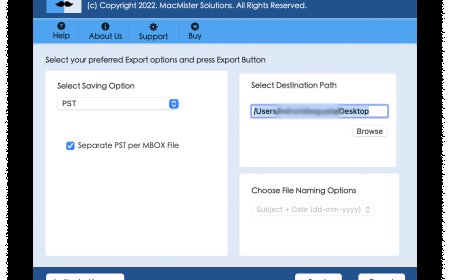How to Pick Tomatoes at Local Farms
How to Pick Tomatoes at Local Farms Picking tomatoes at a local farm is more than just a weekend activity—it’s a sensory experience that connects you to the land, the season, and the people who grow your food. Unlike supermarket tomatoes, which are often harvested green and ripened with ethylene gas, farm-picked tomatoes are allowed to mature naturally on the vine, developing rich flavor, vibrant
How to Pick Tomatoes at Local Farms
Picking tomatoes at a local farm is more than just a weekend activity—it’s a sensory experience that connects you to the land, the season, and the people who grow your food. Unlike supermarket tomatoes, which are often harvested green and ripened with ethylene gas, farm-picked tomatoes are allowed to mature naturally on the vine, developing rich flavor, vibrant color, and optimal texture. Learning how to pick tomatoes at local farms ensures you bring home the ripest, juiciest, and most flavorful fruit possible while supporting sustainable agriculture and local economies. This guide walks you through every step of the process—from planning your visit to selecting the perfect tomato—so you can harvest with confidence and enjoy the true taste of summer.
Step-by-Step Guide
Plan Your Visit in Advance
Before heading out to the farm, research which local farms offer u-pick tomato experiences. Not all farms allow visitors to harvest their own produce, and some operate on specific days or require reservations. Start by searching online for “u-pick tomatoes near me” or visit your state’s agricultural extension website, which often maintains directories of pick-your-own farms. Many farms also list their u-pick schedules and available varieties on social media or their own websites.
Call ahead to confirm availability. Tomato ripening depends on weather, planting date, and variety, so what’s ripe one week may not be ready the next. Ask about peak season, pricing (often by pound or flat), and whether gloves or containers are provided. Some farms require payment in advance or have minimum purchase requirements. Planning ahead ensures you don’t make an unnecessary trip and helps you arrive at the optimal time for harvesting.
Choose the Right Time of Day
The time of day significantly affects tomato quality and your harvesting experience. The best time to pick tomatoes is in the early morning, shortly after sunrise, when temperatures are cool and the fruit is firm and full of moisture. Tomatoes harvested during the heat of the day can be overly soft, prone to bruising, and may have lost some of their natural sugars due to heat stress.
Additionally, morning dew helps clean the surface of the fruit slightly and reduces the risk of spreading plant diseases through handling. Avoid picking tomatoes during or immediately after rain, as wet fruit is more susceptible to mold and rot. If you can’t go in the morning, late afternoon—just before sunset—is the next best option, provided the sun isn’t scorching.
Wear Appropriate Clothing and Gear
Dress for the farm. Wear closed-toe shoes with good traction—muddy or uneven terrain is common. Long pants and a lightweight long-sleeve shirt protect you from thorns, insect bites, and sun exposure. A wide-brimmed hat and sunscreen are essential. Bring a reusable tote, basket, or collapsible crate to carry your harvest; many farms encourage bringing your own containers to reduce waste. Some farms provide baskets, but they may be limited or dirty.
Optional but helpful items include gardening gloves (to protect your hands from sticky stems and dirt), a small pair of pruning shears or scissors (if allowed), and a reusable water bottle. Avoid wearing sandals, flip-flops, or loose clothing that can get caught in vines.
Locate the Tomato Sections
Upon arrival, follow the farm’s signage or ask a staff member for directions to the tomato patch. Tomato plants are often grown in raised beds, rows, or trellised systems. Some farms use high tunnels or greenhouses for early-season crops, while others grow tomatoes in open fields. Pay attention to the variety labels—many farms plant heirloom, cherry, beefsteak, or plum tomatoes, each with distinct picking cues.
Heirloom varieties, such as Brandywine or Cherokee Purple, may be more delicate and ripen unevenly. Cherry and grape tomatoes often grow in clusters and are easier to spot. Beefsteak tomatoes are larger and require more careful handling. Knowing what you’re looking for helps you focus your search and avoid wasting time.
Identify Ripe Tomatoes
Not all red tomatoes are ready to pick. Ripeness is determined by color, texture, aroma, and slight softness—not just hue. Here’s how to tell:
- Color: Look for a deep, even color specific to the variety. A ripe red tomato should be fully colored, with no green near the stem. Heirlooms may be yellow, orange, purple, or striped—don’t assume red equals ripe.
- Texture: Gently squeeze the tomato. It should yield slightly under pressure, like a ripe peach, but not feel mushy. Overly firm tomatoes are underripe; overly soft ones may be overripe or bruised.
- Aroma: Smell the stem end. A ripe tomato emits a sweet, earthy fragrance. If it smells bland or like nothing, it’s not ready.
- Detachability: A ripe tomato should come off the vine with a gentle twist. If you have to pull hard, it’s not ready. Some varieties have a natural “slip” where the stem separates cleanly from the plant.
Remember: Tomatoes continue to ripen slightly after picking, but only if they’ve already started turning color. A completely green tomato will not develop good flavor off the vine.
Harvest Correctly
Never yank or tear tomatoes from the plant. This damages the vine and can reduce future yields. Use the following technique:
- Locate the tomato you want to pick, ensuring it meets the ripeness criteria above.
- Support the fruit gently with one hand to prevent bruising.
- With your other hand, find the small stem just above the fruit.
- Twist the tomato gently but firmly until the stem snaps at the natural separation point (called the abscission layer).
- If the stem doesn’t release easily, use clean pruning shears to cut just above the calyx (the green leafy part at the top).
Place each tomato carefully into your container. Avoid stacking them or packing them tightly, as pressure can cause bruising. If you’re picking multiple varieties, keep them separated to avoid flavor mixing or cross-contamination.
Sort and Inspect Your Harvest
Before leaving the farm, take a moment to inspect your tomatoes. Remove any that are damaged, cracked, or show signs of mold or insect damage. Some farms allow you to leave imperfect fruit in designated bins for composting or animal feed. Don’t take home tomatoes that are too soft or have deep blemishes—they won’t store well and may spoil your other fruit.
Check for green shoulders—areas near the stem that remain green even when the rest of the fruit is red. These tomatoes are still ripening and can be left on your counter to finish. They often have the best flavor once fully ripe.
Transport Your Tomatoes Safely
Protect your harvest during transport. Keep tomatoes in a shaded, cool area—never in direct sunlight or a hot car. If it’s a long drive, consider placing your basket in a cooler with a cold pack (but not touching the fruit directly). Avoid refrigerating tomatoes immediately after picking; cold temperatures below 50°F (10°C) break down their cell structure and destroy flavor compounds.
Once home, store tomatoes at room temperature, stem-side down, on a countertop away from direct sunlight. This slows moisture loss and prevents bruising. Use them within 3–5 days for peak flavor.
Best Practices
Respect the Farm and Its Rules
Farmers invest months of labor into growing tomatoes. Treat their land with care. Stay in designated picking areas. Don’t step on plants, trample rows, or pull fruit from areas marked “Do Not Pick.” Leave gates as you found them, and carry out all trash. Many farms rely on volunteer labor and community goodwill—your respect ensures the u-pick experience continues for others.
Pick Only What You’ll Use
It’s tempting to fill every container, but over-picking leads to waste. Tomatoes are perishable. If you can’t use or preserve your harvest within a week, consider buying less. Many farms offer discounts for bulk purchases, but only buy what you can realistically consume, freeze, or share.
Support Seasonal Eating
Tomatoes are a warm-season crop. In most regions, peak season runs from late June through September. Avoid visiting farms outside this window expecting ripe fruit—greenhouse tomatoes are available year-round, but they lack the flavor of sun-ripened field-grown varieties. Eating seasonally reduces environmental impact and ensures the best taste.
Learn to Identify Common Tomato Varieties
Understanding the differences between tomato types helps you pick the right one for your needs:
- Heirlooms: Unique colors and shapes, complex flavor, thin skin, short shelf life. Ideal for salads and fresh eating.
- Cherry/Grape: Small, sweet, high sugar content. Great for snacking, roasting, or adding to pasta.
- Beefsteak: Large, meaty, juicy. Perfect for sandwiches or grilling.
- Plum/Roma: Fewer seeds, thick flesh. Best for sauces, canning, and drying.
Ask farm staff which varieties are in season. They often know which are at peak ripeness and can recommend the best for your cooking plans.
Handle Tomatoes Gently
Tomatoes are fragile. Even minor bruising can lead to rot within days. Always carry them by the bottom, not the stem. Avoid stacking them more than two layers deep. If you’re transporting them in a car, use a towel or soft cloth to cushion the basket.
Wash Before Use, Not Before Storage
Never wash tomatoes before storing. Moisture encourages mold growth. Instead, rinse them under cool water just before you’re ready to eat or cook them. Pat dry with a clean towel.
Compost or Donate Imperfect Fruit
Not all tomatoes are picture-perfect. Slightly misshapen or blemished fruit still tastes wonderful. If you have extras you can’t use, consider donating them to a local food pantry or composting them in your backyard. Many farms have compost bins for this purpose—ask if you can leave imperfect tomatoes there.
Engage with Farm Staff
Farmers are passionate about their crops. Don’t hesitate to ask questions: “Which variety is the sweetest?” “Are these tomatoes organic?” “What’s the best way to use this type?” Staff often share recipes, storage tips, and growing secrets that you won’t find online. Building a relationship with local growers enhances your experience and supports transparency in food systems.
Tools and Resources
Essential Tools for Tomato Picking
While you don’t need specialized equipment, a few simple tools make the process easier and more efficient:
- Reusable harvesting baskets or crates: Breathable materials like wicker or mesh prevent moisture buildup and allow airflow.
- Pruning shears or small scissors: Useful for varieties with tough stems or if twisting doesn’t work cleanly.
- Gardening gloves: Protect hands from thorns, dirt, and sticky plant sap.
- Small notebook or smartphone: Take notes on which varieties you liked and where you picked them. This helps you return next year with better knowledge.
- Reusable water bottle and towel: Stay hydrated and clean your hands as needed.
Recommended Apps and Websites
Several digital tools help locate u-pick farms and track tomato seasonality:
- U-Pick It (upickit.com): A U.S.-based directory of pick-your-own farms with filters for produce type, location, and payment methods.
- LocalHarvest (localharvest.org): Connects consumers with farms, farmers markets, and CSAs. Includes user reviews and seasonal availability.
- Farmers Market Finder (usda.gov): Run by the USDA, this tool locates markets and farms by zip code and offers seasonal produce guides.
- Google Maps and Instagram: Search “u-pick tomatoes [your city]” on Instagram to see real-time photos of ripe tomatoes and farm conditions. Many farms post daily updates.
Books and Educational Materials
Deepen your knowledge with these resources:
- “The Tomato Lover’s Handbook” by Susan Ashworth – A comprehensive guide to tomato varieties, growing, and cooking.
- “The Heirloom Tomato: From Garden to Table” by Craig LeHoullier – Written by a renowned tomato breeder, this book explores flavor, history, and cultivation.
- Local Cooperative Extension publications – Many universities (e.g., Cornell, UC Davis) offer free PDF guides on tomato ripening, storage, and disease prevention.
Seasonal Calendars and Regional Guides
Tomato season varies by climate. Use these general guidelines:
- Southern U.S. (Florida, Georgia): May–July
- Mid-Atlantic (Virginia, Pennsylvania): June–September
- Midwest (Ohio, Illinois): July–August
- Northeast (New York, Vermont): July–October
- West Coast (California, Oregon): June–November
Check your state’s agricultural extension office for hyperlocal planting and harvest calendars. They often publish printable guides with frost dates and crop timelines.
Real Examples
Example 1: The Smith Family Farm, Pennsylvania
Every August, the Smiths open their 20-acre organic farm to u-pick visitors. They grow 12 varieties of heirloom tomatoes, including Black Krim, Green Zebra, and Mortgage Lifter. Visitors receive a map, a basket, and a handout explaining ripeness cues. Last year, a family picked 15 pounds of tomatoes and made homemade sauce, roasted cherry tomatoes for winter, and shared extras with neighbors. The farm’s Instagram posts show daily harvest updates, and customers often return year after year, bringing their children to learn where food comes from.
Example 2: Sunnyside U-Pick, Oregon
Located in the Willamette Valley, Sunnyside offers a self-guided u-pick experience with a focus on sustainability. They provide reusable containers and encourage visitors to bring their own. The farm uses drip irrigation and composted manure, and staff offer short talks on pollination and soil health. One visitor, a retired chef, picked 20 pounds of San Marzano-style tomatoes and canned them using a family recipe passed down from her Italian grandmother. She now brings her grandchildren every year, turning tomato picking into a tradition.
Example 3: The Community Tomato Patch, Vermont
This nonprofit urban farm in Burlington runs a u-pick program for low-income families and seniors. They plant early- and late-season varieties to extend harvest time. Volunteers help with signage and harvesting guidance. One senior participant, who had never picked a tomato before, learned to identify ripeness by smell and color. She now makes tomato jam and shares it with her book club. The farm’s success has inspired three other neighborhoods to start similar programs.
Example 4: A Misstep Turned Lesson
A couple from Maryland visited a popular u-pick farm in late June, expecting ripe beefsteaks. They arrived at noon, wore flip-flops, and picked tomatoes by color alone. They ended up with 10 pounds of hard, pale red fruit that never ripened properly. Disappointed, they returned the next year with research, gloves, and a cooler. They learned to pick at sunrise, check for aroma, and twist gently. That season, they made the best salsa they’d ever tasted—and shared the recipe with the farm owner, who added it to their website.
Example 5: The Tomato Swap
In a rural Iowa town, neighbors started a tomato swap after a local farm closed its u-pick season early due to drought. Each family brought their harvest to the community center, sorted by variety, and exchanged what they didn’t need. One person had too many Roma tomatoes—she traded them for cherry tomatoes from a neighbor who couldn’t make sauce. They pooled ingredients and held a potluck. The event became annual, and now the town hosts a “Tomato Fest” every September.
FAQs
Can I pick tomatoes that are still green?
You can, but only if you plan to ripen them indoors. Green tomatoes will not develop full flavor or sweetness off the vine unless they’ve begun to blush (show a hint of color). For best results, pick tomatoes that are at least starting to turn color and store them in a paper bag with a banana to speed ripening.
How do I know if a tomato is organic?
Ask the farm directly. Organic certification requires paperwork and inspections, so farms that are certified will usually display their USDA Organic label. Some farms follow organic practices but aren’t certified due to cost—they may explain their methods on-site or online. Look for signs that say “no synthetic pesticides” or “chemical-free.”
Why do some tomatoes taste bland even when they look ripe?
Flavor depends on soil health, sunlight, water, and variety. Tomatoes grown in nutrient-poor soil or overwatered may be watery and flavorless. Heirlooms often have more complex flavor than hybrids. Taste is also affected by how long they’ve been off the vine—tomatoes should be eaten within days of picking for peak flavor.
Are there tomato varieties that are easier to pick?
Yes. Cherry and grape tomatoes grow in clusters and are easier to spot. They also detach easily with a gentle tug. Beefsteak and heirloom tomatoes are larger and may require more careful handling. If you’re new to picking, start with cherry tomatoes—they’re forgiving and rewarding.
What if I accidentally damage a tomato while picking?
It happens. If you bruise a tomato, leave it in the designated “imperfect” bin if the farm has one. If not, take it home and use it immediately in cooked dishes like soups, sauces, or salsas. Bruised tomatoes are still delicious—just not ideal for fresh eating.
Can I bring my dog to the u-pick farm?
Most farms do not allow pets in the fields due to food safety regulations and the risk of contamination. Service animals are typically permitted, but always call ahead to confirm. Leave your dog at home to respect the farm’s rules and other visitors.
How long do farm-picked tomatoes last?
At room temperature, ripe tomatoes last 3–5 days. Unripe tomatoes can take 2–7 days to ripen. Never refrigerate ripe tomatoes unless they’re about to spoil—cold destroys flavor. For longer storage, freeze whole tomatoes (no need to peel) or make sauce and can it.
Do I need to pay if I don’t pick any tomatoes?
Most farms charge only for what you harvest. Some may have an entry fee or require a minimum purchase, so check their policy beforehand. If you’re just visiting to observe or learn, ask if tours are available—many farms offer free educational visits.
Why do some tomatoes have green shoulders?
Green shoulders occur when the top of the tomato, near the stem, stays green due to high sun exposure or genetic traits. It’s not a sign of unripeness—it’s common in heirlooms and doesn’t affect flavor. The green part will soften and sweeten over time. Simply cut it off if you prefer all-red flesh.
Is it safe to eat tomatoes with cracks or splits?
Minor cracking is common after heavy rain or uneven watering. As long as the crack isn’t moldy or oozing, the tomato is safe to eat. Use cracked tomatoes immediately in cooked dishes. If mold is present, discard the fruit.
Conclusion
Picking tomatoes at a local farm is more than a chore—it’s a celebration of seasonal abundance, community, and the simple joy of food grown with care. When you learn how to identify ripe fruit, handle it gently, and respect the land that produced it, you transform a routine task into a meaningful ritual. The tomatoes you harvest will taste brighter, sweeter, and more alive than anything from a grocery shelf. More importantly, you become part of a food system that values sustainability, transparency, and human connection.
Each tomato you pick carries the sun, the soil, and the hands of the farmer who nurtured it. By choosing to pick your own, you support small-scale agriculture, reduce food miles, and reclaim the pleasure of eating food that’s truly fresh. Whether you’re making a summer salad, canning sauce for winter, or sharing a basket with a neighbor, the tomatoes you harvest will carry more than flavor—they’ll carry memory.
So next time the sun is high and the vines are heavy, lace up your shoes, grab a basket, and head to the farm. The best tomatoes aren’t bought—they’re found, chosen, and picked with intention.





























